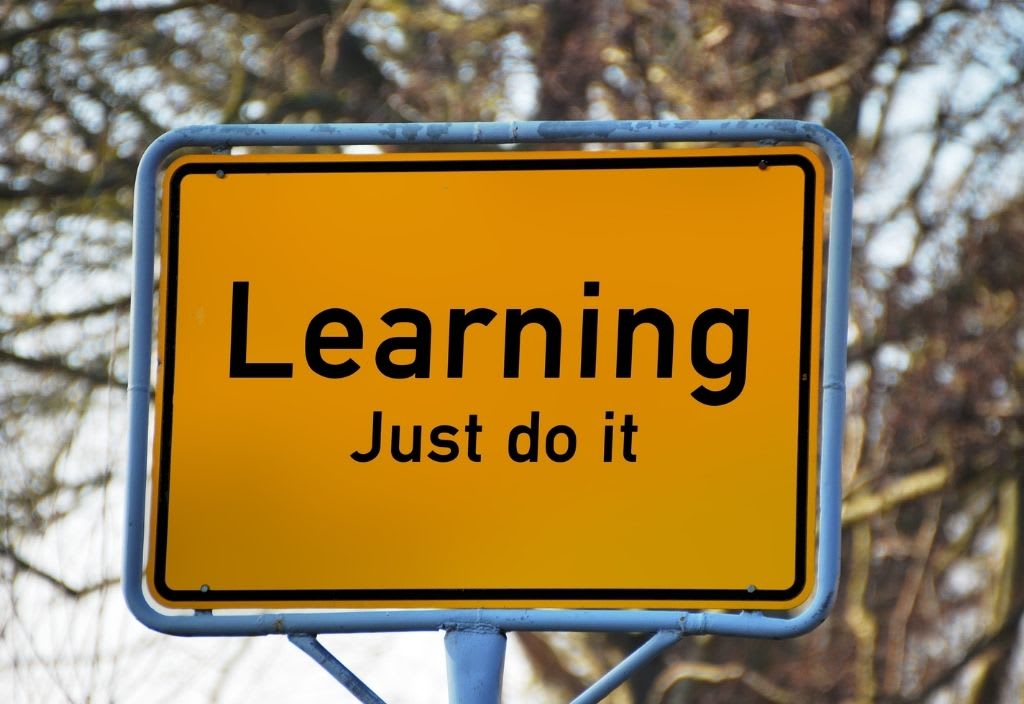

In an ever-changing global business environment, the pace of change and innovation is rapid. Organizations constantly face novel challenges and need to adapt to stay ahead. The critical attribute organizations are now seeking in candidates and fostering in their current employees?
What is learning agility?
Learning agility is the capability of an individual to rapidly learn from experiences and apply this learning to new, unfamiliar, and evolving situations. It goes beyond just the ability to learn; it's about the speed and adaptability of that learning process.
According to a study by the Korn Ferry Institute, individuals who are learning agile continuously seek new challenges, solicit direct feedback, self-reflect, and adapt quickly to change. These are the individuals that companies are eager to hire and cultivate, given the unpredictability and volatility of today's business world.
Why learning agility is critical in recruitment and HR
Learning agility is a predictor of future success. According to the Corporate Executive Board, employees with high learning agility are 45% more likely to be high performers. Tech giants like Google place emphasis on hiring for learning agility, considering it as critical as technical knowledge.
According to a CCL (Center for Creative Leadership) research, learning agility is a prime indicator of potential leadership and predictor of successful role transitions.
1. Rapid technological advancements
Technologies are evolving at an unprecedented rate. Jobs that exist now may not be relevant in the next decade. For instance, according to the World Economic Forum, 65% of children entering primary school today will end up working in jobs that don't currently exist. Thus, hiring for specific skills might become outdated, but hiring for learning agility ensures the adaptability of the workforce.
Netflix's agility in learning and adapting is legendary. Initially, it was a mail-order DVD service. As technology evolved, they quickly transitioned to streaming, and now, they've made significant inroads into content creation. This constant adaptation, a direct result of organizational learning agility, has kept Netflix at the forefront of entertainment.
2. Increasingly complex work environments
With globalization, diverse teams, and multifaceted projects, employees often encounter situations they've never faced before. Those with higher learning agility can navigate these complexities, making them invaluable assets.
3. Competitive advantage
A study from Bersin by Deloitte suggests that organizations with a strong learning culture outperform their peers in innovation, productivity, and employee satisfaction. Hence, having an agile learning workforce can directly contribute to a company's success.
When the demand for traditional film started to wane due to the digital revolution, Kodak, despite being a pioneer in the photography industry, struggled to adapt. On the other hand, Fujifilm displayed tremendous learning agility. They diversified into new areas like cosmetics and healthcare, capitalizing on their knowledge of chemicals used in films. Today, Fujifilm remains a successful company, while Kodak filed for bankruptcy in 2012.
How the concept of learning agility came about
Historically, companies primarily hired and promoted based on past performance. However, by the mid-to-late 20th century, there was a growing recognition that past performance was not always the best predictor of future success, especially in new, unfamiliar roles. This led to a shift in focus towards assessing an individual's potential.
- 1970s and 1980s: There was an emphasis on experiential learning. Researchers like David Kolb posited that experience played a central role in learning, leading to the development of models like the Experiential Learning Cycle.
- Early 1990s: The term "learning agility" is often attributed to Warner Burke, a professor at Columbia University. Burke was among the first to differentiate between those who simply have potential and those who are "learning agile."
- Mid 1990s: Working at the Center for Creative Leadership (CCL) and later at Lominger International, Michael Lombardo and Robert Eichinger contributed significantly to the concept's evolution. They defined learning agility as the "willingness and ability to learn from experience, and subsequently apply that learning to perform successfully under new or first-time conditions." Their research also highlighted several factors or dimensions of learning agility, many of which are still referenced today.
- 2000s: The 2000s saw a broader acceptance of the concept in HR and talent development circles. Organizations began to realize the importance of learning agility in rapidly changing business environments. It became especially crucial for leadership roles where individuals frequently encountered novel challenges.
- Mid to late 200s: Building on the work of Lombardo and Eichinger, Korn Ferry, a global organizational consulting firm, further refined the model of learning agility. They identified five main facets: self-awareness, mental agility, emotional agility, change agility, and people agility. This is called the Korn Ferry's model.
- Modern Day: Today, learning agility is considered a critical competency, especially for leadership roles. Several assessment tools and developmental programs focus specifically on enhancing learning agility.
The dimensions of learning agility
Korn Ferry has described five dimensions of learning agility, all of which are important to measuring a company’s adaptability. They include:
1. Mental agility
This involves the ability and willingness to ask questions and keep learning as and when necessary. Mentally agile people operate from the premise that they do not know everything, but they can try to learn as much as possible. They are quick to observe, question, identify, and suggest changes as they are alive to their environment.
2. Self-awareness agility
This involves understanding one’s own strengths and weaknesses and seeking out feedback so that they can work on both. Self-awareness is crucial to gathering the exact learning skills necessary for each person to grow.
3. People agility
Those with people agility can talk to, work with and get along with people of all backgrounds and beliefs. They recognize that disagreement does not have to spoil a good working relationship and invite opposing views when it comes to brainstorming or collaboration. They are also highly empathetic and tend to have strong leadership qualities.
4. Change agility
Those with change agility embrace transformation and are always open to it, even when things might seem just fine as they are. Such people tend to consistently take up new challenges, such as picking up new methods of accomplishing things for the sake of the business.
5. Results agility
This is perhaps the simplest to measure, as there are concrete benchmarks involved, but there are also powerful subtleties.
People who strive towards delivering results in first-time situations tend to pick projects that they have high probabilities of succeeding at. However, they are also the first to pick up learnings from the things they did not succeed at and then apply them elsewhere.
They are eager to help others achieve positive results. In an agile organization, all the employees will possess these forms of agility in varying proportions. Therefore, these agilities will reinforce each other at the overarching level and enable significant shifts ahead.
How HR can assess learning agility
Ideally, a company that wishes to maximize its learning agility will hire those employees most open to learning themselves. However, what is important to remember is that learning agility can be taught even to the most resistant of employees.
Therefore, the best way to improve agility is by tailoring the program to bring out the best in all the employees, which requires understanding where they are positioned currently. Here is how the HR department, in three steps, can do it:
1. Set learning agility tests
There are several professional learning agility assessments that you can use for your teams, such as those by IBM, Mettl, or any other stellar pre-employment assessment tool. It is crucial to pick a test that has been benchmarked and assessed for accuracy.
However, none of these tests is 100% accurate, so they should be supplemented with performance tests and benchmarked to specifics like department or level in the company. Emotional intelligence tests can also give you insights into who is most receptive to change.
Using Adaface, for example, you can conduct a series of tests to assess the candidate’s psychometry, problem-solving capabilities, logical reasoning prowess, critical thinking skills, and so on, besides the usual technical and non-technical knowledge.
2. Also test their cognitive ability
All functions in job roles are becoming increasingly novel or non-repetitive across the globe and need the application of cognitive abilities.
A big part of learning agility and soft skills like receptiveness and attitude to feedback is cognitive ability. It helps, therefore, to conduct cognitive tests for your current and prospective employees and identify which skills, if any, they need particular help with.
3. Focus on the candidate’s ability to adapt during interviews
When hiring someone new, test their openness to change with the right interview questions. For instance, you could ask them how they would approach a problem entirely new to their experience or how their experience has been with accepting and acting on feedback.
One of the learning agility interview questions could be about the people they have learned the most from, be they leaders, colleagues, or even people junior to them.
Candidates who are always receptive to feedback and act on it, regardless of where the feedback came from, are the most likely to be strong assets to a learning agility program.
Additionally, ask a ‘what if’ question. For instance: “What if you were given a new team to lead, which steps would you undertake?”
And when a candidate confidently answers the question, throw in a curveball and test their flexibility and speed to solve problems. Reduce their budget or time, remove resources, and ask them how they would reach the outcome in different scenarios.
Their responses will throw a shine on key behaviors of learning agility such as experimentation, collaboration, reflection, interpersonal risk-taking, feedback-seeking, and so on.
4. Feedback, training and development
HR should promote continuous learning environments, fostering a culture where employees seek feedback, reflect, and adapt. Create platforms where employees can give and receive feedback regularly. This promotes a culture of continuous improvement. You can also pair less experienced employees with seasoned professionals. This can aid in the rapid transfer of knowledge and cultivate a mindset of continuous learning.
Investing in development leads to a more adaptable workforce. Gallup's research shows that organizations that prioritize employee development see a 10% increase in profitability. Accenture's "Future Talent Platform" is an internal initiative to upskill its employees, ensuring they remain agile in a changing market.
Best practices for building learning agility
Managers need to enable team members to learn extensively and in-depth as the need arises. This calls for a company-wide learning system, from the highest levels to the most junior ones — an essential step for achieving long-term organizational growth.
A collaborative environment is key, as is one where employees feel comfortable asking questions and seeking out new opportunities. Here are some best practices for managers looking to enhance learning agility at work:
1. Determine necessary system/process updates
In most cases, businesses will find that implementing a culture of learning agility calls for improvements in the way their software systems and processes run. Determine precisely what is needed, be it a revamped knowledge sharing portal or the removal of access barriers to crucial case studies, and then implement it as soon as possible.
2. Help employees target their weak areas
With the right performance, cognitive and psychometric assessments, managers can help their employees gain proper clarity on what they need to improve. This gives them a roadmap to start them off on the learning agility process.
3. Encourage them to make mistakes
All too often, managers talk a lot about learning through failure but then come down hard on their employees for making mistakes. This will only end up discouraging team members from trying new things.
If you want to build agility, encourage experimentation and foster a culture where mistakes are viewed as learning opportunities. You can even share your own mistakes and what you learned from them so that your team members can see you genuinely mean what you say.
4. Encourage cross-training
In siloed organizations, teams can fall into patterns of doing the same thing over and over. An excellent way to break out of the old mindsets is by letting one department observe how a different department approaches problem-solving. This can give them new ideas and help them break out of ruts and find innovative solutions.
5. Offer peer mentoring/job shadowing opportunities
If your employee expresses an interest in trying something new, facilitate them by giving them a chance to shadow other employees in that role. You can also match them with a mentor who can impart skill-based learnings while taking them through a relevant live project.
At the same time, reach out to your highly skilled employees and senior leaders and offer them incentives to serve as trainers and mentors for anyone interested.
6. Reward progress
Have a structured reward system for progress made with learning objectives or experimenting with new projects. This reward system should hold good even if the results are not perfect. The focus is not to demotivate the under-performing employees and not get everything right at one go but should be on taking steps in the right direction.
Over to you
Leaders often have an intuition about the level of learning agility within the organization, even if they do not use the exact words to describe their feeling.
The connection between learning agility and employee performance is evident, with 58% of high-performing employees exhibiting high learning agility, according to a Korn Ferry study.
In the age of technological upheaval and market unpredictability, learning agility emerges as a defining trait for future leaders and high performers. It's no longer about who knows the most but who can learn the most efficiently and effectively. By recognizing, nurturing, and investing in this ability, organizations not only future-proof their workforce but also ensure sustained growth and success in a competitive landscape.
It is agility that will enable thriving even in the face of significant challenges, and accomplishing it calls for a company-wide culture that encourages learning and relearning at all levels and at all times.

Spending too much time screening candidates?
We make it easy for you to find the best candidates in your pipeline-
with a 40 min skills test.


